Good hand hygiene plays a critical role in preventing foodborne illnesses. The Food and Drug Administration (FDA) estimates that each year, 1 in 6 Americans suffer from food poisoning due to infectious diseases that contaminate food, resulting in 128,000 hospitalizations and 3,000 deaths.
Proper hand hygiene is one of the most effective ways to reduce the risk of spreading germs that can cause these illnesses.

What Is A Pathogen?
Pathogens are microorganisms with the potential to cause diseases in humans, animals, and plants. These microscopic creatures range from bacteria to viruses and fungi, and even protozoa. They’re ever-present in our environment, and their spread can easily turn into epidemics or pandemics if left unchecked.
Pathogens cause diseases by infecting and damaging host cells, using them to multiply and spread through the body. Some of the world’s deadliest diseases, such as HIV/AIDS, smallpox, and coronavirus, are caused by pathogens. Despite their size, pathogens pose enormous threats to human health and the economy, making it vital to understand their nature and prevent their spread.
Types of pathogens commonly found in food
Infected food handlers spread germs like wild fire. Food safety is extremely important because food contamination can be nasty and even life-threatening in some cases. Common symptoms include vomiting, nausea, diarrhea, and fever. But what types of pathogens are responsible for causing these ailments? Let’s explore the answer. Bacteria such as Salmonella, Escherichia coli (E. coli), and Listeria monocytogenes are often found in contaminated food. Meanwhile, viruses such as norovirus and hepatitis A can be spread from person to person via contaminated food.
Additionally, parasites like Cryptosporidium and Giardia can also be found, especially untreated water used to wash produce when preparing food. These pathogens can be found in various types of food, including raw meat, unwashed produce, and undercooked eggs. It’s important to take necessary precautions, such as proper food handling and cooking, to prevent the spread of these pathogens and keep yourself and other food workers safe.
The importance of proper hand hygiene
Good hand hygiene is one of the most effective ways to prevent foodborne illness. There are several different types of hand hygiene, each with their own benefits. The most common approach is to wash your hands preferably before you are ready to eat food. Alternatively, alcohol-based hand sanitizer can be used if soap and water are not readily available.
They kill germs by breaking down the outer layer of their cells. Common Sense spray or foaming hand sanitizer are useful when you’re out and about and don’t have access to a sink. Remember, even if your hands don’t look dirty, they may still be teeming with germs. So, always practice good hand hygiene to avoid getting sick.

Consequences of poor hand hygiene
Maintaining proper hand hygiene is crucial in any setting, but especially in food handling settings. The consequences of poor hand hygiene can be devastating, with the potential of spreading harmful bacteria and viruses that can cause foodborne illnesses. Without proper hand washing and sanitation procedures in place, workers handling raw food can easily cross-contaminate, leading to outbreaks and even legal action from a sick or injured person.
It’s not just about avoiding getting sick personally, but also about protecting the health and safety of customers. So, let’s all do our part and make sure to wash our hands thoroughly and frequently, especially when working with food. It’s a small step that can make a big difference.
How Can Pathogens Get On Your Hands
Pathogens can be found on various surfaces such as doorknobs, keyboards, and even your own phone. It can also be spread through contact with an infected person or animal. In addition, poor hygiene practices such as not washing your hands regularly or washing incorrectly can also be a key factor in pathogen transmission. Without proper knowledge and awareness, it’s easy for these harmful invaders to take over. So always remember to keep your hands clean and practice good hygiene habits to stay healthy and prevent the spread of pathogens.
How To Implement Hand Sanitizer Into Your Daily Life
In light of the current global health crisis, it has become more important than ever to prioritize hygiene and sanitation in our daily routines. One way to do this is by implementing hand sanitizer into our daily lives. Whether you’re out running errands or simply in your home, having hand sanitizer readily available can help prevent the spread of harmful germs and bacteria.
It’s important to choose a hand sanitizer with at least 60% alcohol content like our Common Sense long lasting hand sanitizer. Make sure to use it whenever you touch a high-contact surface. By incorporating hand sanitizer into your daily routine, you’ll be doing your part in protecting yourself and those around you.

Final Thoughts About Hand Hygiene And Foodborne Illness
Hand hygiene is an essential part of preventing foodborne illnesses. By following best practices such as washing hands with liquid soap and warm water for at least 20 seconds, utilizing alcohol-based sanitizers when needed, wearing single-use gloves while handling food items and avoiding touching the face or food surfaces, we can effectively reduce the spread of bacteria and other harmful microorganisms.
Additionally, it’s important to educate ourselves on how pathogens are transmitted so that we can make more informed decisions about our own health and safety. With a few simple steps taken every day, we can help protect both ourselves and those around us from getting sick due to poor hand hygiene in food handling settings.

